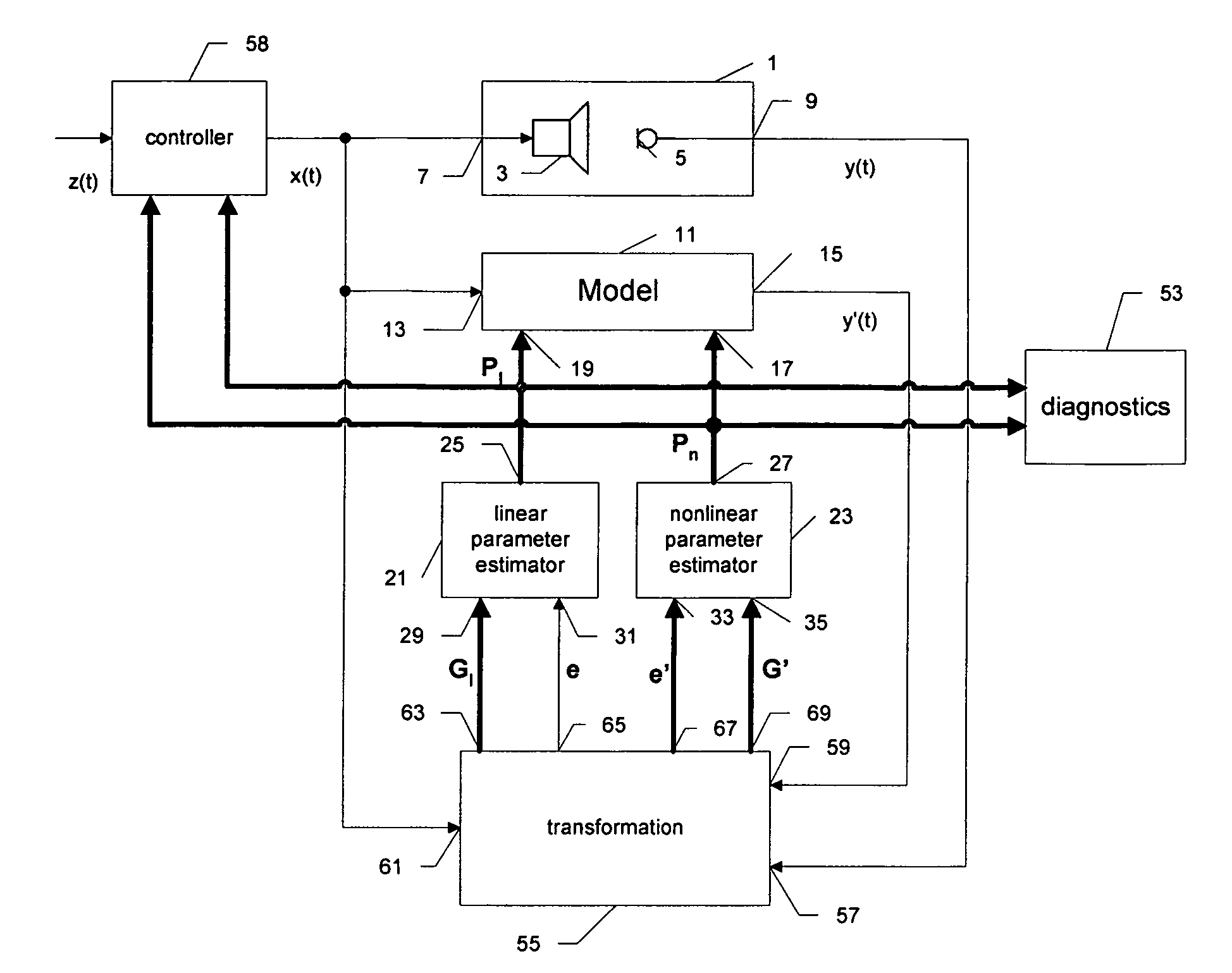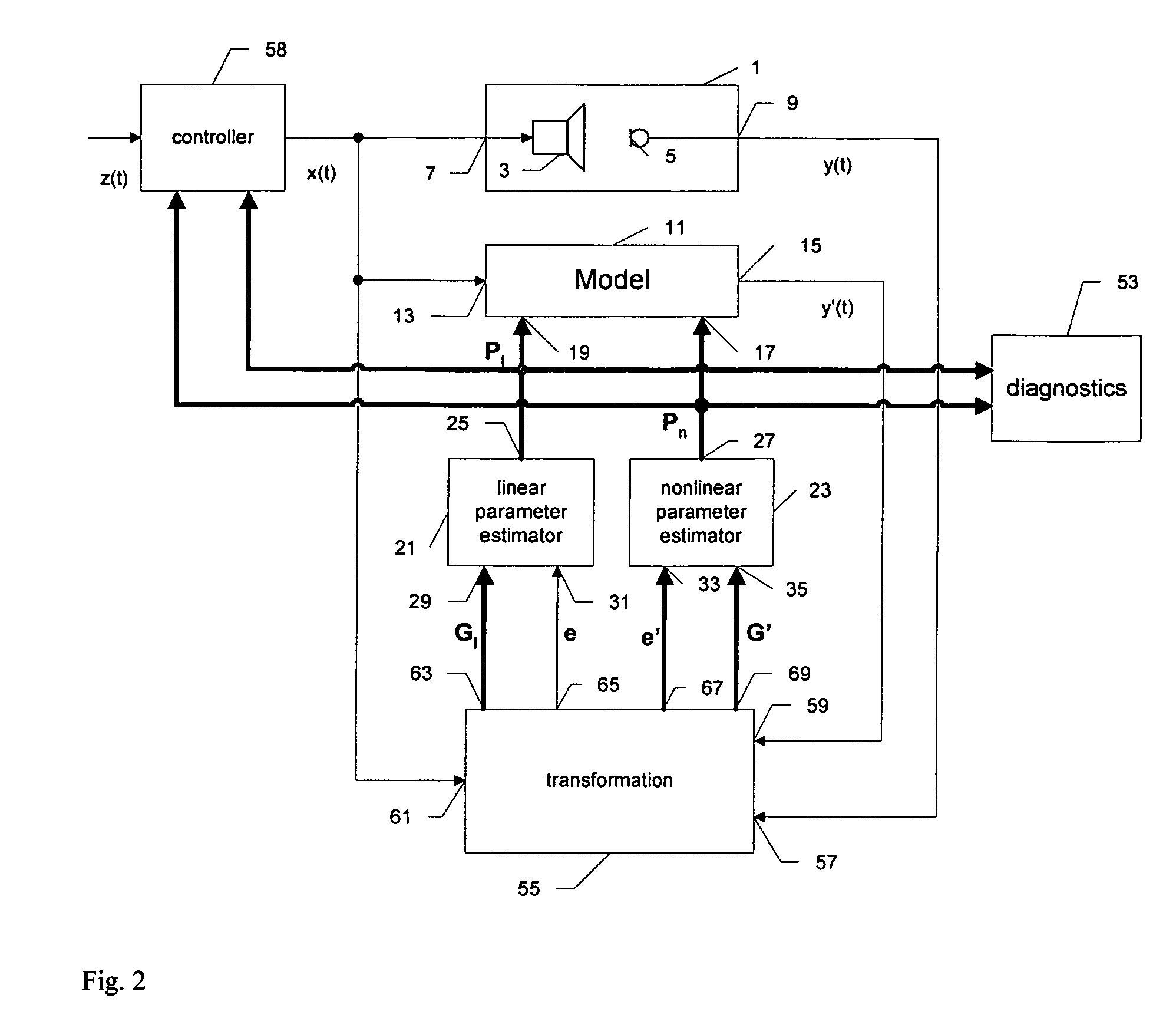Optimal estimation of transducer parameters
a transducer and parameter technology, applied in the field of optimal estimation of transducer parameters, can solve the problems of significant errors in the estimated nonlinear parameters, method time-consuming, and cannot be extended to a multi-tone stimulus, and achieve the effects of minimal processing capacity, low cost of system, and sufficient amplitude and bandwidth
- Summary
- Abstract
- Description
- Claims
- Application Information
AI Technical Summary
Benefits of technology
Problems solved by technology
Method used
Image
Examples
Embodiment Construction
[0058]FIG. 1 is a general block diagram showing a parameter identification system for measurement, diagnostics and control application in the prior art. The real transducer system 1 consists of a loudspeaker 3 (actuator) converting an electrical input signal x(t) (e.g., voltage at the terminals) at input 7 into a acoustical signal and a microphone 5 (sensor) converting an acoustical signal into an electrical signal y(t) at output 9 which is supplied to the non-inverting input of an amplifier 51. The transfer behavior of transducer system 1 is represented by Eq. (1). The input signal x(t) is also supplied via input 13 to a model 11. The model 11 describes the linear and nonlinear transfer behavior of transducer system 1 and generates an output signal y′(t) at output 15 which is supplied to the inverting input of the amplifier 51. The nonlinear Eq. (8) describes the transfer behavior of the model 11, whereas the product of the linear parameter Pl and linear gradient vector Gl(t) is re...
PUM
 Login to View More
Login to View More Abstract
Description
Claims
Application Information
 Login to View More
Login to View More - R&D
- Intellectual Property
- Life Sciences
- Materials
- Tech Scout
- Unparalleled Data Quality
- Higher Quality Content
- 60% Fewer Hallucinations
Browse by: Latest US Patents, China's latest patents, Technical Efficacy Thesaurus, Application Domain, Technology Topic, Popular Technical Reports.
© 2025 PatSnap. All rights reserved.Legal|Privacy policy|Modern Slavery Act Transparency Statement|Sitemap|About US| Contact US: help@patsnap.com



